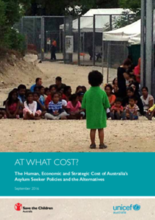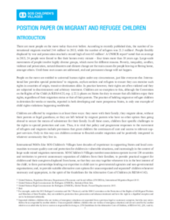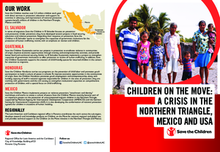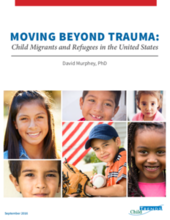Displaying 661 - 670 of 824
This report by Save the Children Australia and UNICEF Australia explores the human, economic and strategic cost of Australia’s current policies which seek to deter asylum seekers from migrating to Australia by sea.
This media briefing from Oxfam describes the Italian reception system for unaccompanied minors which "has turned out to be inadequate for protecting lone refugee and migrant children and their rights," according to the report.
This article discusses how children's political agency manifests in everyday life. It shows how children who become aware of their legal status as 'deportable' reject this subject position and offer their own definitions of who they are and where they belong.
This article discusses how children’s political agency manifests in everyday life. It shows how children who become aware of their legal status as ‘deportable’ reject this subject position and offer their own definitions of who they are and where they belong. Simultaneously, it is argued that children with varying degrees of knowledge about their legal status also express political agency through their struggle to sustain the inclusion they experience.
This paper examines the association between cross-border ties and cross-border separation with the health of sub-Saharan African (SSA) migrant adults living in metropolitan France using data from the nationally representative “Trajectoire et Origines” survey.
This report explores the human, economic and strategic cost of Australia’s current policies which seek to deter asylum seekers from migrating to Australia by sea.
This document discusses SOS Children’s Villages years of experience in supporting vulnerable children and provides 10 recommendations to ensure proper care and treatment of migrant and refugee children.
In this editorial, Laura Brigs discusses the issues that children face while attempting to apply for refugee status in the United States
This is an at-a-glance look at the migration and refugee situation in the U.S., Mexico, and the Northern Triangle of Central America. The document contains general demographic data, as well as an overview of the potential threats that children face in the Nothern Triangle.
This is the executive summary for a longer report, which gives an estimate of the number of immigrant and refugee children who will enter the United States in 2016, where they come from, and the traumas they face. It includes recommendations for policy and practice.






